Another adventure awaited us this morning as we set out for the train station in Hue to catch a train to Da Nang. We had found the station and purchased tickets yesterday, but weren’t prepared for the crowds of travelers. The train was an older model and the tracks were at the same level as the waiting platform, so it was unnerving to see children and others playing on the track as we waited for the train. The pushing and shoving and lack of the sort of protocol we’ve come to expect in the West when it comes to taking turns and waiting in line — pedestrians operate the same as the motorbikes and cars — it’s all a suggestion. It was a bit challenging getting our luggage up to the train, but once on board men seated around us offered to put the bags up on the overhead shelves, which was a huge help. There were TV screens which blared Vietnamese game shows and/or soap operas for half of the trip, and men came down the aisles more than once with fresh hot food — noodles, spring rolls, bamboo skewered meat. Nothing like Amtrak. But the train was on time, and we had help with our bags getting off the train, and the car was there to take us to the hotel in Hoi An.
Graceful, historic Hoi An is Vietnam’s most atmospheric and delightful town. Once a major port, it boasts the grand architecture and beguiling riverside setting that befits its heritage, but the traffic and pollution that we’ve seen in other cities is almost absent. Once a major port, until the Thu Bon River silted up in the late 19th C, it would likely be more like Da Nang today. Instead a tourism boom transformed the local economy, and Hoi An is one of Vietnam’s wealthiest towns, and a culinary mecca. This revival of fortunes has protected Old Town, and its incredible legacy of tottering Japanese merchant houses, Chinese temples and ancient tea warehouses. Named a Unesco site, more that 800 buildings in the Old Town have been preserved, many of which reflect the city’s interesting history.
From the 2nd through the 10th C’s, this was a busy seaport for the Champa kingdom. Power struggles ensued for several centuries, but by the 15th C, with peace restored, Hoi An, known as Faifoo to the Western traders, was one of the major ports in SE Asia. Chinese, Japanese, Dutch, Portuguese, Spanish, Indian, Filipino, Indonesian, Thai, French, British and American ships all came to call for the next 400 years, and the cities warehouses were filled with silk, fabrics, paper, porcelain, areca nuts, pepper, Chinese medicines, beeswax, mother of pearl and lacquer. Under French rule in the late 19th C, and with the river silting up, Hoi An served as an administrative center, and was virtually untouched in the American war, under agreement by both sides.
For Tet, Hoi An brings out the lanterns, and the city is alight on both sides of the river after dark. There are light shows, and musical performances, and a carnival midway like many of those at American county fairs. Food is cooked and offered for sale right on the street, and a big bounce house and small rides keep the kids busy. An improvised sand box, with rice instead of sand, was filled with children and their plastic trucks and buckets and toys. Like many of the streets we’ve visited at night, the crowds were pretty intense, but everyone is polite and with so many families it feels safe. We found an excellent restaurant, Cargo Club, right on the river and had a really good meal, then walked it off to meet the van to the hotel. Quite a lovely little city; hard to know what it might be like without the madness of Tet, but it was beautiful with all the lights.
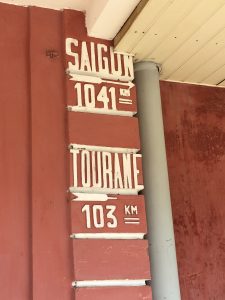
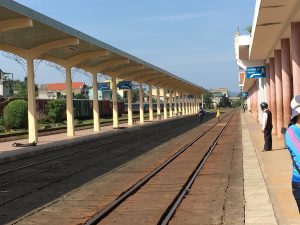

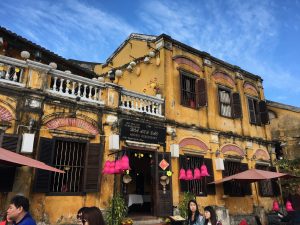

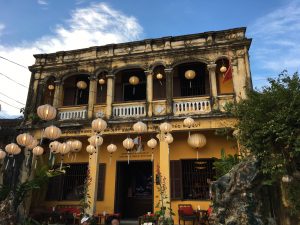
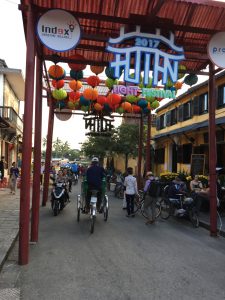
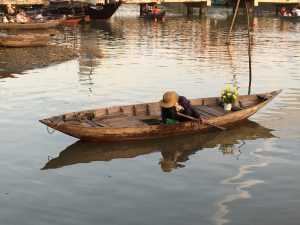
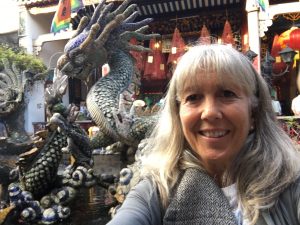
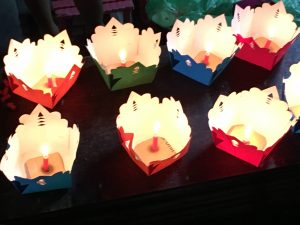

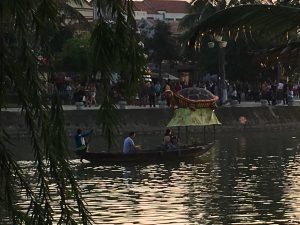
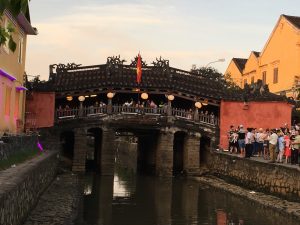
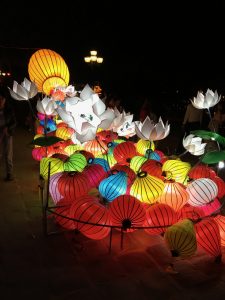
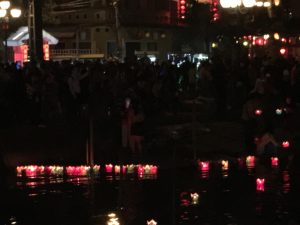
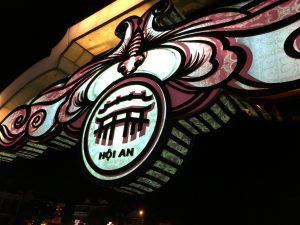
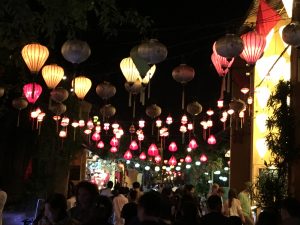

Would be very curious about a non-Tet experience there. Gorgeous.